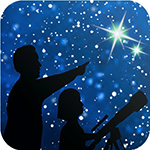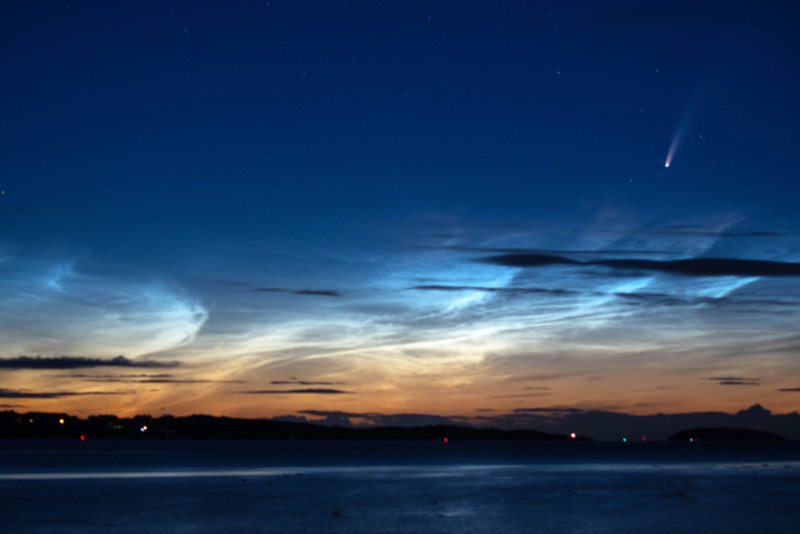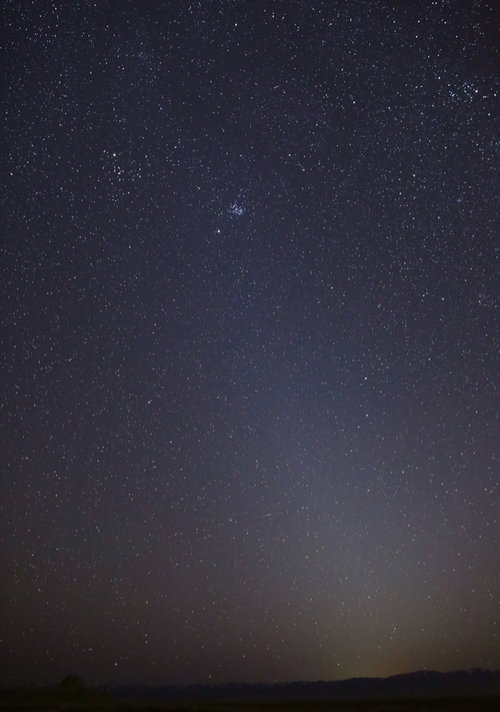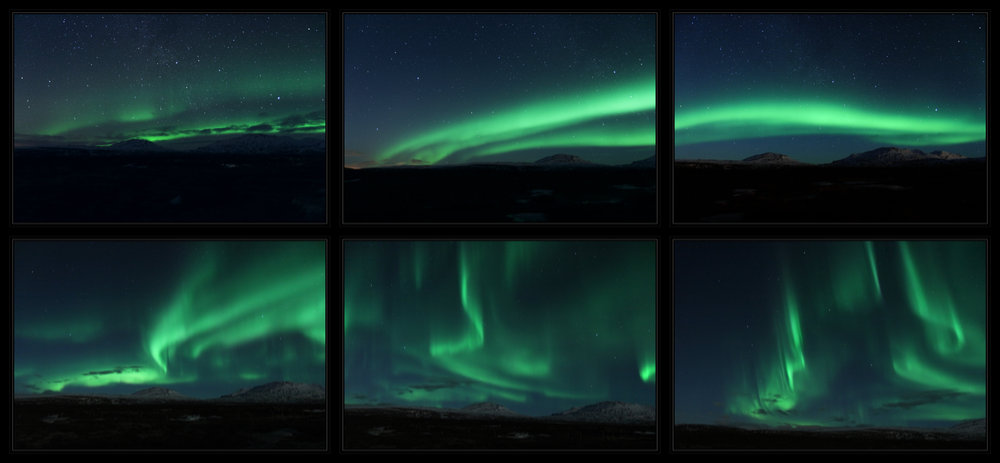Have you spotted any “night lights”? These phenomena brighten dark skies with celestial light ranging from mild to dazzling: the subtle light pyramid of the zodiacal light, the eerie twilight glow of noctilucent clouds, and most famous of all, the wildly unpredictable and mesmerizing aurora.
Aurora, often referred to as the northern lights (aurora borealis) or southern lights (aurora australis), can indeed be a wonderful sight, but the beautiful photos and videos shared online are often misleading. For most observers not near polar latitudes, auroral displays are relatively rare and faint, and without much structure, more gray than colorful, and show up much better in photos. However, geomagnetic storms can create auroras that dance and shift rapidly across the skies with several distinct colors and appear to observers much further away from the poles – on very rare occasions even down to the mid-latitudes of North America! Geomagnetic storms are caused when a magnetic storm on our Sun creates a massive explosion that flings a mass of particles away from its surface, known as a Coronal Mass Ejection (CME). If Earth is in the path of this CME, its particles interact with our planet’s magnetic field and result in auroral displays high up in our ionosphere. As we enter our Sun’s active period of its 11-year solar cycle, CMEs become more common and increase the chance for dazzling displays! If you have seen any aurora, you can report your sighting to the Aurorasaurus citizen science program at aurorasaurus.org
Have you ever seen wispy clouds glowing an eclectic blue after sunset, possibly towards your west or northwest? That wasn’t your imagination; those luminescent clouds are noctilucent clouds (also called Polar Mesospheric Clouds (PMC)). They are thought to form when water vapor condenses around ‘seeds’ of dust from vaporized meteorites – along with other sources that include rocket launches and volcanic eruptions – around 50 miles high in the mesosphere. Their glow is caused by the Sun, whose light still shines at that altitude after sunset from the perspective of ground-based observers. Noctilucent clouds are increasing both in frequency and in how far south they are observed, a development that may be related to climate change. Keeping in mind that observers closer in latitude to the poles have a better chance of spotting them, your best opportunity to spot noctilucent clouds occurs from about half an hour to two hours after sunset during the summer months. NASA’s AIM mission studies these clouds from its orbit high above the North Pole: go.nasa.gov/3uV3Yj1
You may have seen the zodiacal light without even realizing it; there is a reason it’s nicknamed the “false dawn”! Viewers under dark skies have their best chance of spotting this pyramid of ghostly light a couple of hours after sunset around the spring equinox, or a couple of hours before dawn around the autumnal equinox. Unlike our previous two examples of night lights, observers closer to the equator are best positioned to view the zodiacal light! Long known to be reflected sunlight from interplanetary dust orbiting in the plane of our solar system, these fine particles were thought to originate from comets and asteroids. However, scientists from NASA’s Juno mission recently published a fascinating study indicating a possible alternative origin: dust from Mars! Read more about their serendipitous discovery at: go.nasa.gov/3Onf3kN
Curious about the latest research into these night lights? Find news of NASA’s latest discoveries at nasa.gov
Comet NEOWISE flies high above a batch of noctilucent clouds in this photo from Wikimedia contributor Brwynog.
License and source CC BY-SA 4.0 https://commons.wikimedia.org/wiki/File:Comet_Neowise_and_noctilucent_clouds.jpg
The zodiacal light extends into the Pleiades, as seen in the evening of March 1, 2021 above Skull Valley. Utah. The Pleiades star cluster (M45) is visible near the top.
Credit and source:: NASA/Bill Dunford .https://www.flickr.com/photos/gsfc/51030289967
A sampling of some of the various patterns created by aurora, as seen from Iceland in 2014. The top row photos were barely visible to the unaided eye and were exposed for 20-30 seconds; in contrast, the bottom row photos were exposed for just 4 seconds- and were clearly visible to the photographer, Wikimedia contributor Shnuffel2022.
License and source: CC BY-SA 4.0 https://commons.wikimedia.org/wiki/File:Aurora_shapes.jpg
This article is distributed by NASA Night Sky Network
The Night Sky Network program supports astronomy clubs across the USA dedicated to astronomy outreach. Visit nightsky.jpl.nasa.gov to find local clubs, events, and more!




